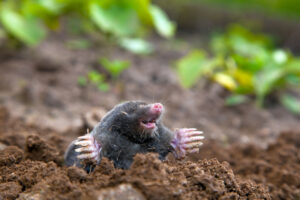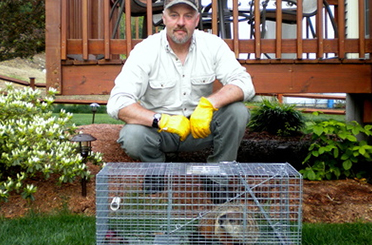 Why is the man so at war with the mole? The answer is heaps of earth and holes in the lawn. Keeping a lawn healthy, green, and dense is
Why is the man so at war with the mole? The answer is heaps of earth and holes in the lawn. Keeping a lawn healthy, green, and dense is
not easy. Moles are a lot more work because they create hills and tunnels that are a thorn in many lawn owners’ sides by digging. The holes have to be closed, and then new lawn seeds are sown so that a thick lawn is created again in the following year. And no, if there are several mounds, in most cases there are not several moles, because each pile of the earth has a different function:
- Sleeping Chambers
- Pantries
- Nest Chambers
Even the mole passages need a mound in between so that the animal can catch air or escape potential predators. However, these are less common in gardens. The well-branched system is why the digging animals create so many hills and can be recognized by them so quickly. They are loners who intensively defend their territory against other moles. The only other moles in the area are the juveniles. So you only ever have to deal with one mole.
Harm from Moles
Damage from moles is not limited to damage to the landscape. Practice shows that diseases and pests are inseparable. Although moles do not directly transmit infections, they dig a network of underground passages through which mice, rats, and even snakes enter the site. These are already more severe enemies that actively destroy crops and carry the causative agents of tularemia, leptospirosis, and other diseases.
Pests lead an underground way of life and settle in colonies. If you do not fight them, then the soil to a depth of 20 cm will soon turn into a porous structure, where it is easy to fall through and injure your leg. This is also one of the dangers of a mole on the site. But one of the main troubles is damage to plant roots. Hunting for underground insects and their larvae, worms, and moles simultaneously damage the roots and tubers of a plant, preventing their growth or leading to death. The benefits and harms of moles are controversial.
On the one hand, they improve the soil structure and destroy many pests. Still, there is also a downside to the coin, which allows the mole to be considered an undesirable participant in symbiosis.
Actionable Tips for Mole Removal
The Best Fight Is Prevention.
If your garden has not yet become a favorite place for moles, this does not mean that you should not even start scaring away an underground predator. To do this, take a mesh (sheets of slate are also suitable, which is even better), dig a trench around the entire perimeter of your site (the depth of which is at least 1 meter), and install this grating/slate. Don’t miss a single centimeter. “Seal” your territory; isolate yourself from unwanted underground guests. If you have a fence, then you do not need to take too high a mesh. But it should not be lower than 15 cm from the surface of the earth. However, this is prevention for mole removal. If you already have moles, then this method will not work. Otherwise, a blind predator simply cannot leave your territory physically.
Traps
Only trapping can give visible results. However, it is not worth putting them thoughtlessly. First, you have to study your new neighbor. Where he likes to dig the most! After finding his favorite tunnel, dig it up. If the mole recovered it quickly, set a trap there. It doesn’t have to be a mousetrap or a trap. This beast, although not cunning, will jump out of it without any difficulty, thanks to its fur. He’s very slippery. Choose cylinders with a wire structure, roughness but not smooth inside and out. The mole slides underground; as soon as it comes across a long rough space, it gets stuck on it. There are at least 2 traps for each tunnel.
Weasel
No, not love and tenderness for rodents – the mole is terrified of its smell and the sounds it makes. There is no need to release a new pet to hunt. It is enough just to put the cage with him on the site.
Final Words
Also, like mice or rats, moles can carry infectious diseases. Defecating in their tunnels, moles with urine and feces release dangerous pathogens into their environment, which do not miss their opportunity and settle on the surface of root tubers. Of course, a living organism is necessary for microorganisms’ vital activity; however, they can quickly “go into hibernation” until the moment of injury to the human or animal organism. And these spores can be stored in a favorable environment for a very long time. Therefore, it is necessary to get rid of uninvited guests unambiguously.

